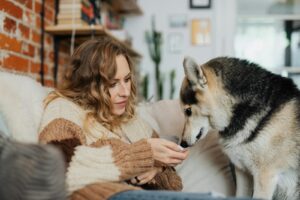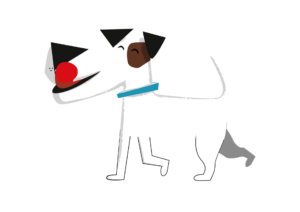Dogs Trust issues Howl-oween Advice

Halloween can be a scary time of year not just for those participating in trick or treating, but for dogs, who may find unexpected knocks at the door and people dressed in costumes unsettling. Dogs Trust, the UK’s largest dog welfare charity, is sharing its top tips for dog owners to help their pets have a safe and happy Halloween.
Angela Wetherall, Dogs Trust Manager, said:
“Halloween can be fun for all the human members of the family, but for dogs it can be a frightening time of the year. Your dog may be exposed to many unfamiliar sights and sounds, and they could easily become overwhelmed by the number of knocks at the door from people they don’t recognise, combined with being unnerved by the sound of any fireworks.”
There are lots of simple steps you can take to help keep your dog safe and happy this Halloween with Dogs Trust’s top tips:
· Adapt your routine in order to miss the costumes and fireworks
It’s a good idea to head out before any festivities may begin and take extra tasty treats with you. If you spot any trick or treaters whilst you’re out, head away from them and reward your dog with a treat whilst you turn around to avoid any ghoulish encounters that might scare your dog.
In the weeks leading up to Halloween, gradually change your dog’s routine by walking them earlier in the day to allow them time to exercise and toilet before dark. With more people out at night than normal, it’s best to keep your dog at home and in sight for safe keeping, whilst ensuring microchip details are kept up to date with the database in case they vanish out of the door during a trick or treat visit. Your dog also needs to wear an ID tag on their collar.
· Ensure your dog is comfortable
Some dogs will benefit from having a safe place to retreat to should they feel worried. This should be a quiet and cosy familiar place in the house that will give them the chance to relax undisturbed.
Some dogs may cope better by seeking reassurance, so give them attention and comfort if they seek this out and try to stay with them in the room they are most comfortable, so they know they aren’t alone.
For other dogs who may not appear worried, it’s good to keep them occupied with their favourite items or activities. Experiment before the firework and spooky evenings begin, and slowly introduce them, to find out what your dog will enjoy the most.
· Keep human treats and sweets safely out of your dog’s reach
Many human treats, especially chocolate, are toxic to dogs. It’s safest to keep these treats well out of your dog’s reach, and in case they accidently sneak a human treat, you can teach your dog to leave it before the trick or treaters start knocking.
· Be careful when opening doors so your dog doesn’t accidentally escape
Before Halloween arrives, think about your dog’s access to the door. Popping your dog on a lead before you open the door or ensuring they don’t have access to the door when trick or treaters pop by will help to keep them safe. If you can’t close off access to your door, you can teach your dog to wait at doorways, decreasing the chance of your dog running out the door or jumping up at trick or treaters.
· Keep the costumes and dressing up for humans only
Adding a new and unfamiliar item for your dog to wear can cause them to be uncomfortable. You should also be aware of anything that could cause abrasions or irritations, resulting in your dog overheating, or stopping them from expressing normal behaviour.
· Feed your dog their main meals before the trick or treating begins so they can eat at a relaxed time
You could save a small portion of their food to prepare some food-based enrichment activities for later in the evening, to help keep them calm and relaxed.
· Think twice about taking your dog out trick or treating
Even dogs who aren’t fazed by people dressed up and all the excitement involved with Halloween may not enjoy it for as long as you do. They might prefer to be at home in their safe and comfy space with their favourite enrichment activity and toys.
Halloween is the start of a disruptive and noisy week for dogs with fireworks also happening in the lead up to Bonfire Night.
Angela adds:
“Dogs have approximately four times more sensitive hearing than humans, so the loud cracks and bangs of fireworks can often be a terrifying experience for them. Following the recent news that firework displays that are run by local councils have been cancelled in some parts of the UK, there may be a rise in people hosting private firework displays at home.
“We urge dog owners to be extra prepared for a rise in neighbourhood displays, and to look at our full guidance on how to help their dogs stay safe and settled during fireworks. Private firework displays may not be limited to one night, so it is very important for all dog owners to seek out advice early, in order to have a comfortable fireworks season with their dog.”
For guidance on how to help your dog cope during fireworks, visit the Dogs Trust website
If you are planning to host a firework display at home:
· Let your neighbours know well in advance, so they can prepare their dogs.
· Limit your display to 30 minutes or less.
· Opt for quieter, lower decibel fireworks.
For some fun, dog friendly ideas for a ‘cosy night in’, try our spooky snacks
For further information on keeping your dog safe and happy at Halloween, please head to our website www.dogstrust.org.uk/dog-advice/life-with-your-dog/seasonal/halloween





